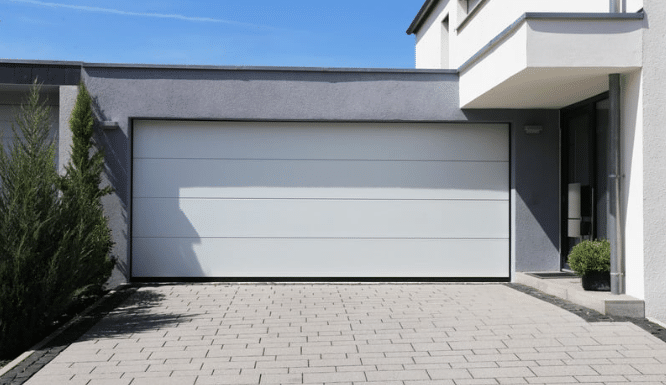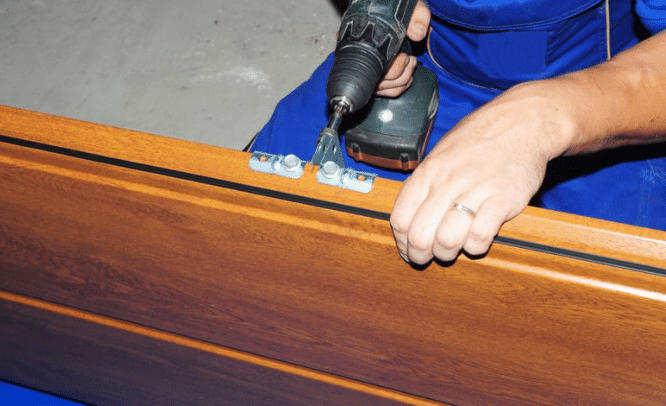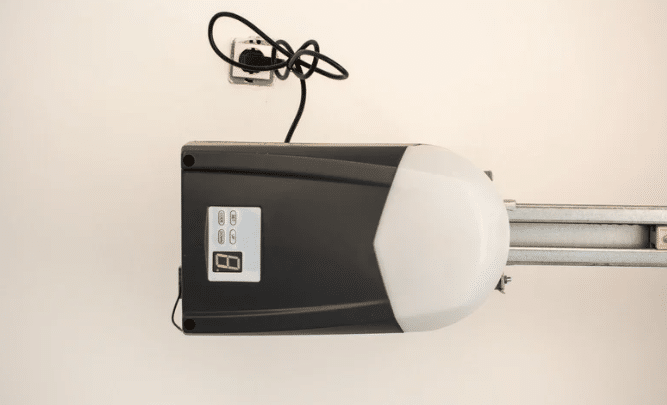Explore the complete anatomy of a garage door. This professional guide covers every component and function to help you understand, maintain, and optimize garage door performance.
A well-functioning garage door is often taken for granted until something goes wrong. To maintain your garage door and troubleshoot issues effectively, it’s crucial to understand the anatomy of the garage door and how each part contributes to its overall performance.
Whether you’re performing routine maintenance, planning an upgrade, or simply curious about how your garage door operates, knowing its anatomy can empower you as a homeowner. This knowledge can help you communicate more clearly with repair professionals and handle basic tasks independently.

In this complete guide, we’ll explain each component’s function and the anatomy of a garage door. By the end, you’ll have a thorough understanding of what keeps your garage door running smoothly and what to look out for when maintenance is required.
Why Understanding the Anatomy of Garage Door Matters
Understanding the anatomy of a garage door is not just for technicians. Homeowners who grasp how their garage door works can make informed decisions about maintenance, repairs, and upgrades.
Improved Maintenance
When you know the purpose of each part in the anatomy of a garage door, you’re better equipped to perform preventative maintenance. This can extend the life of your garage door and help you avoid costly repairs.
Faster Troubleshooting
Recognizing the various components makes it easier to identify where a problem might be occurring. This insight allows you to communicate clearly with repair professionals, ensuring faster and more accurate service.
Safer Operation
Understanding the anatomy of the garage door also promotes safer use. Knowing which parts should not be tampered with, such as tension springs, helps prevent accidents and injuries.
Anatomy of Garage Door: Key Components and Their Functions
Let’s explore the essential parts of the garage door’s anatomy and the role each plays in its operation.
Garage Door Panels

The panels form the visible surface of your garage door. They provide structure, insulation, and aesthetic appeal. Panels are typically made of steel, wood, aluminum, or composite materials.
Tracks
Tracks are metal channels that guide the garage door as it opens and closes. There are vertical tracks along the door’s sides and horizontal tracks extending into the garage.
Rollers
Rollers are small wheels that run inside the tracks, allowing the door to move smoothly. Keeping rollers clean and lubricated is essential for quiet, efficient operation.
Hinges
Hinges connect the door panels, allowing them to bend as the door moves along the curved portion of the track. Regular inspection ensures that hinges remain secure and functional.
Springs
Springs are a critical part of the anatomy of the garage door. They counterbalance the weight of the door, making it easier to lift. There are two main types:
- Torsion Springs: Mounted above the door, these provide a controlled lifting force.
- Extension Springs: Located along the horizontal tracks, these stretch to support the door’s weight.
Cables
Lift cables work with the springs to raise and lower the garage door. They wind around drums or pulleys and must be kept in good condition to ensure safe operation.
Drums
Drums are attached to the torsion bar and guide the cables as they wind and unwind. Proper alignment is essential to prevent uneven lifting.
Garage Door Opener

The opener is a motorized device that automates the opening and closing of the door. It typically consists of a motor, drive mechanism (chain, belt, or screw), and electronic controls.
Safety Sensors
Safety sensors are located near the floor on either side of the door. They detect obstacles and prevent the door from closing if something is in its path, ensuring safe operation.
Weatherstripping
Weatherstripping seals the edges of the door, keeping out drafts, moisture, and debris. Inspect it regularly to maintain energy efficiency and comfort.
Manual Release
The manual release is a handle or cord that disengages the opener, allowing you to open or close the door manually during a power outage or emergency.
Maintenance Tips for the Anatomy of a Garage Door
Your garage door is one of your home’s largest and most frequently used moving parts. Proper maintenance can significantly prolong its life, enhance its performance, and help prevent costly repairs. A well-maintained garage door also ensures safety and security for your property. Here are some comprehensive tips to help you care for the key components of your garage door:
- Lubricate Moving Parts Regularly
Keep the rollers, hinges, and tracks well-lubricated to ensure smooth operation and reduce wear. Use a high-quality silicone-based lubricant or garage door spray lubricant on all moving parts. Apply lubricant to the rollers, hinges, bearings, and tracks at least every six months or as recommended by the manufacturer.
- Inspect Cables and Springs for Signs of Wear
The cables and springs are critical for the door’s operation and bear much of its weight. Inspect them regularly for signs of fraying, rust, or weakening. If you notice any damage, do not attempt to repair or replace these parts yourself, as they are under high tension and can cause injury. Instead, contact a qualified professional for service.
- Test the Balance of the Door
A well-balanced door operates smoothly and reduces strain on the opener. To test the balance, disconnect the opener and manually lift the door halfway. If it stays in place, it is properly balanced. If it moves up or down, the springs may need adjustment. Hiring a professional technician for any spring adjustments or replacements is highly recommended. - Check and Replace Weatherstripping
Weatherstripping at the bottom of the door helps seal out dirt, debris, and the elements, improving energy efficiency. Inspect it regularly for cracks, tears, or flattening. Replace damaged weatherstripping promptly to maintain a proper seal and protect your garage from moisture and pests. - Clean and Maintain Door Panels
Clean the garage door panels periodically using mild detergent and water to remove dirt, grime, and pollutants. For metal doors, this also helps prevent corrosion. Inspect the panels for dents, scratches, or paint damage, and touch them up as needed to maintain the door’s appearance and structural integrity.
Regular inspections and timely repairs not only extend the lifespan of your door but also contribute to the safety of your household. If you’re ever unsure about performing a maintenance task, don’t hesitate to consult a professional garage door technician.
Frequently Asked Questions
What is the metal around the garage door called?
The metal around the garage door is called the track system or garage door frame. It guides the door’s rollers and allows the door to move smoothly up and down.
What is the strip around the garage door called?
The strip around the garage door is called weatherstripping or a garage door seal. It helps block out drafts, moisture, and debris, improving insulation and protection.
What are garage door sections?
Garage door sections are the horizontal panels that make up the face of the door. Hinges connect them and allow the door to bend as it opens along the track.
What are the parts on a garage door?
A garage door includes panels, tracks, rollers, springs, cables, hinges, and an opener. These parts work together to allow smooth and safe door opening and closing.
What is the bottom part of a garage door called?
The bottom part of the garage door is called the bottom panel or bottom section. It often has a bottom seal attached to keep out water, dirt, and pests.
Conclusion
Understanding the anatomy of a garage door is invaluable for every homeowner. Each component is vital in ensuring smooth, safe, and reliable operation. By knowing how these parts function and interact, you can take proactive steps to maintain your garage door and avoid unexpected issues.
Regular maintenance and professional inspections will keep your garage door performing optimally. If you’re unsure about any aspect of your garage door, it’s always best to consult with experienced professionals who can provide expert guidance and service.
If you’re ready to improve your garage door’s performance or need assistance with repairs, DoorJam Garage Repair is here to help. Our knowledgeable team can ensure that every component of your garage door is functioning correctly and safely.
End NOTE
DoorJam Garage Repair aims to lead the way in shaping the future of garage door services. We understand that knowing the anatomy of a garage door is essential for proper maintenance, and our team is committed to helping you keep your system performing at its best.
Learn more about our company on our About page and explore our range of new garage door replacement options. We also provide expert garage door repair services in Durham, NC, Raleigh, NC, and Wake Forest, NC.
Stay connected with us on Facebook and Instagram for the latest updates and tips. Ready to get started? Contact us today through our Contact Us page for more information.
DoorJam Garage
3418 Quarry Rd, Wake Forest, NC 27587, United States
+19199066623
